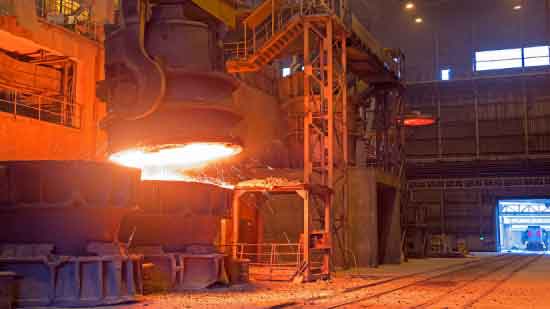
Steel sand casting is a versatile and widely used manufacturing process for producing steel components with complex shapes and sizes. It involves the use of molds made from compacted sand to create cavities into which molten steel is poured. Once the steel solidifies, the mold is removed, and the finished steel casting is ready for further processing or use. Here is a comprehensive guide to the steel sand casting process:
- Pattern Design: The first step in steel sand casting is to create a pattern that represents the final shape and dimensions of the desired steel component. The pattern can be made from various materials, such as wood, plastic, or metal. It is essential to design the pattern with allowances for shrinkage and machining requirements.
- Mold Preparation: The pattern is used to create a mold cavity in sand. The mold consists of two halves, known as cope and drag, which are joined together to form the complete mold. The sand used for molding is typically a mixture of silica sand and a binder, such as clay or resin. The sand is compacted around the pattern to create the mold cavity.
- Mold Assembly: Once the mold halves are prepared, they are assembled, ensuring proper alignment and the creation of gating and riser systems. The gating system allows the molten steel to flow into the mold cavity, while the riser provides a reservoir for excess molten steel and aids in the feeding of the casting during solidification.
- Melting and Pouring: The steel used for sand casting is melted in a furnace, typically an electric arc furnace or induction furnace, to the desired temperature. Once molten, the steel is poured into the mold cavity through the gating system. Proper pouring techniques are critical to prevent defects such as porosity and misruns.
- Solidification and Cooling: After pouring, the molten steel begins to solidify in the mold cavity. The cooling rate and solidification process influence the microstructure and properties of the final steel casting. It is crucial to control the cooling rate to avoid issues like shrinkage and stress formation.
- Shakeout and Cleaning: Once the steel casting has solidified and cooled sufficiently, the mold is removed. This process, known as shakeout, involves separating the casting from the sand mold. After shakeout, the casting is cleaned to remove any residual sand or other impurities using various methods such as shot blasting, sandblasting, or chemical cleaning.
- Finishing Operations: After cleaning, the steel casting may undergo various finishing operations to achieve the desired final shape, dimensions, and surface finish. These operations may include machining, grinding, welding, heat treatment, and surface coating. These processes ensure the casting meets the required specifications and functional requirements.
- Quality Control: Throughout the casting process, rigorous quality control measures are implemented to ensure the integrity and quality of the steel castings. Non-destructive testing techniques such as visual inspection, ultrasonic testing, X-ray examination, and dye penetrant testing may be employed to detect any defects or anomalies.
Steel sand casting offers several advantages, including the ability to produce large and complex steel components, cost-effectiveness for low to medium production volumes, and excellent material properties. It is widely used in industries such as automotive, construction, oil and gas, and heavy machinery. By following proper process control, quality assurance, and continuous improvement, steel sand casting can yield high-quality and reliable steel components.
